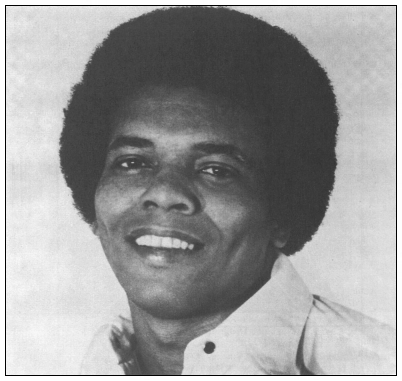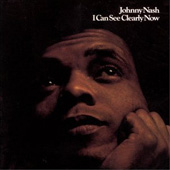|
Johnny Nash Epic 10902 November 1972 Billboard: #1
Born on August 19, 1940, in Houston, Texas, Nash sang lead in the choir at Progressive New Hope Baptist Church. He once competed in a local talent show, with first prize being a spot at the Apollo Theater in Harlem, but lost out to an aspiring soul singer, Joe Tex ("I Gotcha," "Hold What You've Got"). Just into his teens, Johnny starred in Matinee, a local variety show, breaking the color barrier in Texas television. During the early '60s, Nash recorded Sam Cooke-influenced pop and show tunes for Warner Brothers, Argo and MGM. His biggest success during this period was "What Kind of Love Is This," a Nash composition recorded by Joey Dee and the Starliters that went to number 18 in October, 1962. Later in the decade, Nash and partner Danny Simms started the New York-based JoDa Records, later changed to Jad. For the fledgling label, Johnny produced Sam and Bill's 1965 soul hit, "For Your Love." At the same time, he was also playing supper clubs to pay his rent. Nash first journeyed to Jamaica in 1957 while on location for a Burt Lancaster movie, Take a Giant Step. In 1968, he went back to Kingston to record the reggae-flavored "Hold Me Tight," a number five hit in November, 1968. He used the beat but didn't subscribe to the Rastafarian faith, which inspired reggae. In 1969, Johnny duplicated the soul-reggae formula with "You Got Soul" and an updating of Sam Cooke's "Cupid." Although neither made the American top 30, both enjoyed top 10 success in Britain, encouraging Nash to move to London in 1971, where he signed with CBS Records. By this time, Nash had hired a down-on-his-luck reggae singer named Bob Marley to work as a songwriter. Among the classic Marley contributions for Nash were "Stir It Up" and "Guava Jelly." Using the money he earned from songwriting, Marley started the Tuff Gong label, on which he eventually launched his legendary career with the Wailers. In 1972, Nash again returned to Jamaica to cut his biggest record ever. With some of Marley's mates backing him up, he recorded "I Can See Clearly Now." Released in America, the song entered the Hot 100 at number 84 on September 9, 1972, and moved to number one eight weeks later. Newsday rock critic Robert Christgau described the Nash-penned song as "the kind of record that can get you through a traffic jam." With its positive message and infectious rhythms, Christgau went on to call it, "Two minutes and 48 seconds of undiluted inspiration." In keeping with his new reggae image, Johnny took off his tux for personal appearances and began wearing tailored, well-faded denim jackets, covered with badges and patches. In 1993, "I Can See Clearly Now" made a comeback to the Billboard charts when it was recorded by Jamaican singer Jimmy Cliff for the the soundtrack for the film Cool Runnings, about the Jamaican Olympic bobsled team. Nash, who had begun working on the transfer of old analogue tapes of his music from the 1970s and 1980s into a new digital format, released his final album, Here Again, in 1986. He died of natural causes in Los Angeles on Oct. 6, 2020, at age 80. - Fred Bronson, The Billboard Book of Number One Hits, Billboard, 1988.
No comments so far, be the first to comment. |


